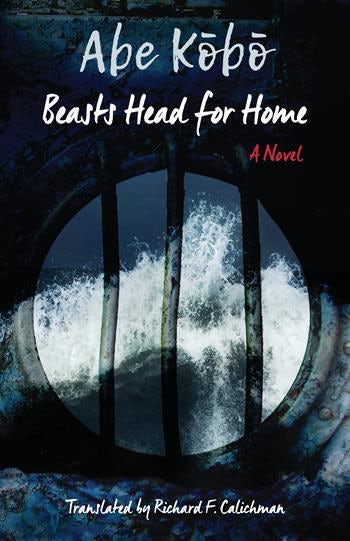Donald Keene on Translating Japanese Soldiers’ Diaries

“Gratifying… picaresque…. The pathos at the heart of Keene’s lovely and gracious memoir, and perhaps of his extraordinary life, emanates from this very human limitation: we cannot live in and love two worlds at once.”
~Roland Kelts, Bookforum on Chronicles of My Life: An American in the Heart of Japan
Biographies, memoirs, and diaries offer intimate portraits of individual life experiences—translation of these works offer a glimpse of what people experience across the globe. Today’s National Translation Month post considers famed Japanese translator Donald Keene’s interest in diaries and his very visceral connection to them during WWII. In February, Press Director Jennifer Crewe reflected on Keene’s prolific work in bringing Japanese literature to the English-speaking audience, and this Friday, there will also be a memorial service for Keene at Columbia University. Check back at the end of the week for our special edition reading list celebrating Keene’s translations.
• • • • • •
It is hard to think of a more fitting figure to start the week with than Donald Keene (June 18, 1922 – February 24, 2019), a prolific scholar of Japan and translator of Japanese literature, especially diaries. Keene’s extensive body of work includes translated novels, poems, and plays from the first millennium to the present. He wrote an autobiography, and published a collection of autobiographical essays, as well as a hybrid memoir/introduction to modern Japanese literature. He wrote a biography of Emperor Meiji, who ruled Japan from 1867 to 1912; one of the poet Masaoka Shiki (1867–1902); a third of the poet and critic Ishikawa Takuboku (1886–1912); and, Jennifer Crewe’s favorite, a biography of Yoshimasa (r. 1449-1473), perhaps the worst shogun ever to rule Japan.
In translation, most of Keene’s interest centered around diaries. These include the observations of the Buddhist priest Kenkō recorded between 1330 and 1332, the journals of Japanese travelers between 1860 and 1920, and the wartime diaries of Japanese soldiers in World War II, showing the same breadth of interest that characterizes his other work. The introduction to Keene’s anthology of a millennium of Japanese diaries, Travelers of A Hundred Ages, shows that the translator’s interest in diaries was not merely literary. In the following excerpt, Keene describes his wartime work of translating Japanese soldiers’ diaries, sometimes bloody or waterlogged, and his illegal attempt to return some of the diaries to their writers’ families in Japan.
From the introduction to Travelers of a Hundred Ages: The Japanese as Revealed Through 1,000 Years of Diaries
I was first made aware of the Japanese absorption with diaries during the Second World War, when for months my chief occupation was translating diaries left on the battlefield. Some were bloodstained and had no doubt been taken from the corpses of Japanese soldiers; others had been soaked in seawater. I read these diaries not because of their possible literary interest but because they sometimes contained information of military value. A diarist might mention the sinking of a ship, the damage sustained during an American air raid, and similar matters; or, he might by his complaints or expressions of foreboding over Japanese prospects in the war provide evidence of a lowered morale among the Japanese military. The military value of the diaries was actually very limited, but every scrap of information about the Japanese armed forces was carefully stored away.
Some diaries were uninteresting from beginning to end, such as those written by model soldiers, who painstakingly related exactly what happened each day on an hourly basis along the lines of: “6:00 A.M. Got up. 6:15 A.M. Washed my face . . . ” and so on. Others, of slightly more interest, parroted the clichés of official pronouncements, reporting that a unit had “with flying colors” boarded a transport, and that “morale was high.” Some diaries were almost illegible, because the handwriting was so bad or because penciled notations had become blurred. In time, however, I became quite proficient at reading even the worst handwriting: the trick was to guess what the diarist was most likely to write under the circumstances and then see whether or not the handwriting could be interpreted in that way.
“The circumstances surrounding the diarists as they wrote made the contents of their little notebooks unforgettable. The sudden fear experienced when the ship next to the diarist’s in the convoy was torpedoed and sunk before his eyes was fully conveyed even by nearly illiterate soldiers.”
Obviously, the diaries would have been more interesting in the soldiers has possessed literary flair, but even if the early parts of a diary, written while the writer was in a safe area, were of small literary interest, once the man boarded a ship for the South Pacific and was in danger of American submarine attacks, or his unit was ordered to the front lines, or the man himself was stricken by malaria or some other tropical disease, the diary often became unbearably moving, regardless of the style. Plain, unliterary expression was actually more effective in such cases than beautiful phrases, as the simple cry of “It hurts!” moves us more than ingenious similes. The circumstances surrounding the diarists as they wrote made the contents of their little notebooks unforgettable. The sudden fear experienced when the ship next to the diarist’s in the convoy was torpedoed and sunk before his eyes was fully conveyed even by nearly illiterate soldiers. I remember especially the account of a New Year’s Day spent by seven Japanese, the only survivors of a company, on some island in the South Pacific. All they had in the way of New Year’s food were thirteen beans that they divided among themselves.
It was impossible for me not to feel sympathy with the Japanese soldiers whose diaries were picked up in Guadacanal, Tarawa, Peleiu, and all the other islands where the war in the Pacific was fought. Even if a diary contained absolutely no military information, I usually read it anyway. The men who wrote these diaries were the first Japanese I ever knew intimately, though we never met, and they were all dead by the time I read their thoughts.
“The men who wrote these diaries were the first Japanese I ever knew intimately, though we never met, and they were all dead by the time I read their thoughts.”
Yet the diaries were also interesting for another reason. American military personnel were strictly prohibited from keeping diaries, for fear that they might fall into the hands of the enemy. This was not much of a hardship for the Americans, few of whom kept diaries anyway. In contrast, although the Japanese military authorities must have realized that the diaries were potentially of value to the enemy, they did not prohibit soldiers and sailors from keeping them. Quite to the contrary, Japanese military personnel were issued with diaries at New Year’s and ordered to keep them, rather in the way that Japanese schools nowadays expect pupils to keep diaries during their summer vacations. Perhaps Japanese officers periodically read the diaries in order to make sure that writers possessed the correct “spirit.” Or perhaps they realized that keeping a diary was so much a part of Japanese tradition that it would be counterproductive to prohibit them. Whatever the reasons, the Japanese military produced a vast number of diaries.
Some diaries contained messages in English address to the American soldiers who would find them after the writer’s death. They asked the finder to send the diary to the writer’s family when the war ended. I put aside a number of such diaries, intending to return them when it was possible. This was illegal, since captured documents were all to be forwarded to Washington, but I took the risk. However, while I was in Okinawa someone went through my belongings left in Hawaii and confiscated the diaries. I wonder where they are now. I am sure they would be no less affecting today than they were forty or more years ago.
“Perhaps I supposed that these diaries might give me a better insight into what Japanese were really like than either the soldiers’ diaries I had been reading or the generalizations about the Japanese character that appeared in American writings of this time.”
I had another wartime experience with Japanese diaries of a totally different nature. Before boarding the ship that was to take me to the Aleutian Islands, I bought in California a copy of the English translations of diaries by Japanese court ladies of the Heian period. Strange as it may seem, this book was what I was reading during the days immediately before the attack on Attu. I do not recall why I chose this particular book to read before my first experience of actual warfare. Certainly nothing could be further from the ugliness of war than the events at the Japanese court of the eleventh century described by three court ladies. Perhaps I supposed that these diaries might give me a better insight into what Japanese were really like than either the soldiers’ diaries I had been reading or the generalizations about the Japanese character that appeared in American writings of this time. It was a peculiar choice, but not necessarily a bad one. Diaries constitute a stream of expression that runs through Japanese literature and, perhaps more than any other form, communicate how Japanese have thought and felt. Forty years later I still turn to diaries, by unknown writers as well as by the literary masters, for my most intimate glimpse of Japanese of every age.
Build your collection of Donald Keene’s work! Save 30% when you order online using coupon code: CUP30!








